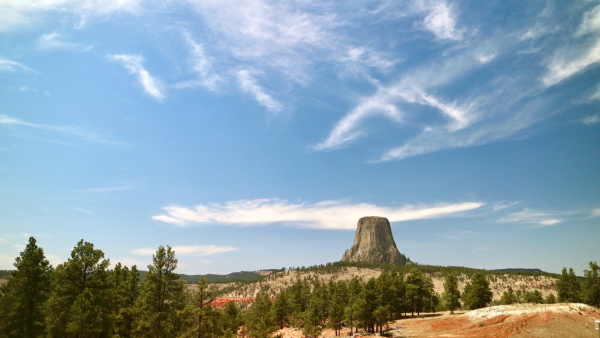The pandemic reopened the eyes of many to the allure of the outdoors. But the realities of today’s skyrocketing prices for almost everything, but most especially fuel and other travel costs, have dampened much of that enthusiasm.
Having taken a significant trip last year without having interacted with anyone after I left my home and arrived in South Dakota, I learned, first-hand, how appealing being able to get out and travel without unnecessary interaction really was during the pandemic. With everything I needed (other than fuel) carried aboard my RV, I didn’t need to worry about accidental interactions. I jokingly called it “anti-social distancing” but really did enjoy the solitude behind the wheel.
The solitude of the road made it easy to understand why Lee Childs’ great Jack Reacher character chose to become a bindlestiff rather than a recluse.
Seems the road really does call to some of us.
Unfortunately, cost has become an obstacle to the Great American Road (trip). Today, despite an urge to get out and see spring happen. My RV is parked because I simply can’t force myself to pay $5/gallon (or more) for fuel. Especially when I can come close to doubling the RV’s mileage simply by driving my car.

I have another “major” road trip planned for June, but travel to meeting last week brought home the fact that it wouldn’t just be a longer trip, it will be a whole lot more expensive this year.
After failing to fill up before leaving, I realized I needed to buy fuel before heading back. Normally, I fuel at one of the wholesale clubs where we have memberships. When I pulled into a gas station, it was a serious case of sticker shock. Twenty dollars later, I had enough fuel to get home.
My summer travel plans include driving to Colorado, then joining friends to motorcycle up Pike’s Peak.
Getting there via RV, according to my navigation system, means driving 1,158 miles (20 hours and 46 minutes worth of driving) from my home. In RV terms, that means a minimum of two-and-a-half days of driving.
You can drive longer, but more than about eight-and-a-half hours behind the wheel of an RV robs me of enthusiasm and attention. Starting-and parking- at a decent hour makes the whole process of RV travel a lot easier.
But a five day excursion essentially becomes a 9-11 day trip. Essentially two-weeks of travel.
Boondocking (staying self-contained without hooking up to water/power/sewer) isn’t an option for a trip that long. At least one night needs to be spent in an RV park (taking on clean water, pumping grey/black holding tanks, refilling the propane generator) enroute. The costs of hookups and propane have also risen since last year. When I looked at rates, I admit being unpleasantly surprised.
And, don’t forget, what goes out must come back. So every night outbound is another night inbound.
But the fuel cost brings it home. The average cost of diesel fuel has gone up- significantly- from my last trip. In Tennessee, for example, the average cost for diesel in June 2021 was $2.901 per gallon. Today, it’s $5.027/gallon. Nearly forty percent higher.
My mileage when towing a motorcycle trailer is 15.5/MPG. That’s assuming I cruise at about 68 miles per hour and stay in the right lane. I don’t always do either, so my “mileage varies” -sometimes greatly. The mountains don’t do me any favors, either.
Doing the math for a 1,158 mile trip, I’m going to need approximately 76 gallons of fuel to get there. But no matter where I stop, I’m only half-done. That means 152 gallons to get there and back again, assuming no side trips.
Fuel costs across Tennessee, Missouri, Kansas, and Colorado are $5.02, $4.74, $4.77, and $4.84/gallon, respective. That’s an average of $4.847/gallon. The numbers say it clearly, the fuel costs will be $368 each way, or $736 round-trip. That’s optimistically presuming I do no indirect driving, encounter no delays and don’t run the engine when I’m stopped. And I’ll need DEF additive- at $15.50 per 2.5 gallon can. It will take two each way, or another $62.00 in fuel costs. Then there’s propane for the generator, lubricant for the generator, plus any other lubricants I’ll need for the diesel engine itself.
Fuel for last summer’s trip cost slightly less than $600. This year -presuming costs don’t change significantly up or down- I’ll be looking at $835-850 (presuming prices stabilize).
Everyone considering RV excursion this year is looking at the same situation. Worse, if you happen to be in some of the higher-cost states.
Many families rented RVs last year because it made travel both possible and affordable.
This summer, iit’s still cheaper than flying (airfares are up 40% from last summer) and staying in hotels. But it’s not a stretch to say fuel is having a negative impact on everything related to recreational travel.
But it’s also impacting the costs of staying home. Fuel costs are impacting life across the board.
Travel is directly more expensive than last summer.
Is an RV vacation still affordable? Sure. As national parks are filling up, state parks are options, and groups like Harvest Hosts say they’re busier than ever, so people are planning to travel.
But if you were scraping together enough cash for a trip last summer, you’re going to have to dig even deeper this summer. It’s no generalization to say that everything will cost more.
We’ll keep you posted.
— Jim Shepherd